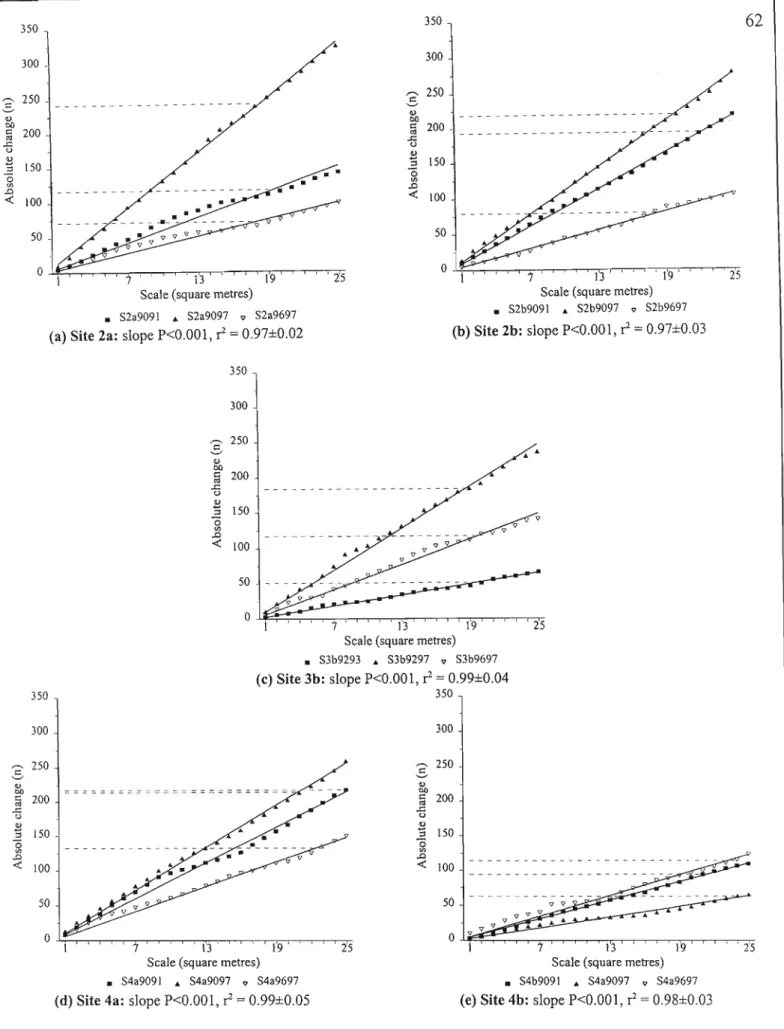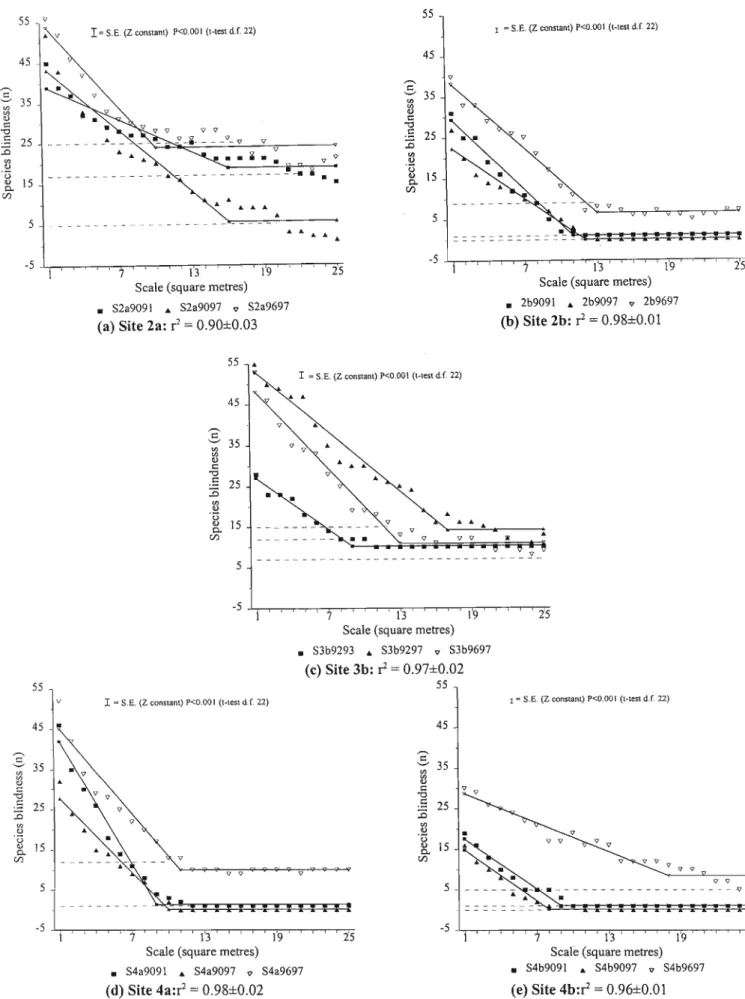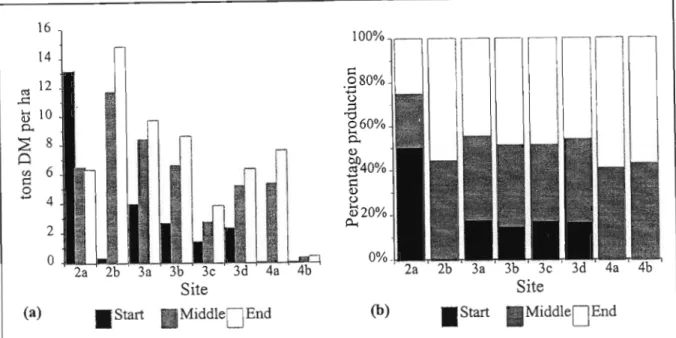I gratefully acknowledge my friends and colleagues at the Plant Protection Research Institute (PPRI) for their continued involvement in the field by assisting with the monitoring. Chapter two examines these anthropogenic influences in the development and subsequent degradation of coastal grasslands based on empirical evidence.
Traits of alien invasive species
Naturalized nitrogen-fixing species enrich nutrient-poor soils and facilitate the establishment of other alien species (Cronk & Fuller 1995). The poorly adapted species hypothesis suggests that native species are less well adapted to specific conditions than non-native species.
Ecosystem integrity
The reason for species displacements would be easier to demonstrate as an outcome of the absence of predator hypothesis than by showing that alien species have superior niche dominance characteristics. This theory is not supported by empirical evidence (Cronk . & Fuller 1995), but observation shows that alien species alter and reduce ecosystems.
Succession
General principles of succession
The frequency and intensity of disturbance are also likely to influence the course of success. Disturbances produce directional changes in species composition, abundance and biomass, affecting hierarchies of adaptation strategies and trade-offs.
Stability and resilience
The qualities of resilience and stability are most important when it comes to the manipulation and management of natural systems for human benefit. The reduction or cessation of the driving variable may not result in recovery and may only be corrected by forced manipulation of the state variable, e.g.
Equilibrium and non-equilibrium
Scale and disturbance
The term 'natural' in the sense of 'natural conditions' given to the management of ecosystems may be irrelevant (Sprugel 1991). Polyclimax conditions may exhibit equilibrium properties at scales that are patchy and short-lived relative to the vegetation of interest.
Ecological redundancy
Such systems are considered resilient because the loss of a species within a guild can be functionally replaced by other, ecologically equivalent member species. This aspect refers to the collective management of species and their roles and niches in the ecosystem.
Functional classifications of plants
Life forms
This system emphasizes the position of surviving buds relative to the soil surface (Table 1.1). The life forms of the fire are determined by the height of the regenerated buds after the fire.
Growth forms
Growth form woody plants shrubs shrubs trees large trees shrubs graminoids perennial forbs bulbous plants ephemeral The Raunkiaer classification was modified to include fire life forms in South Africa (van der Merwe 1966 cited in Rutherford & Westfa1l1994).
Species
Fifty-eight percent of the threatened plants in KZN are found in the grassland ecosystems. The most obvious effect is the increase in the proportion of habitat that falls in the fringe zone.
Conclusion
Isolation and distance between similar patches may reduce the ability to maintain genetic heterogeneity through cross-pollination or the ability of new species or ecotypes to colonize and establish. The dynamics of waste is largely driven by factors arising in the surrounding landscape.
STATUS AND CONTROL OF CHROMOLAENA IN KWAZULU-NATAL 1 Chromolaena odorata
Ecological impacts
Chromolaena in savannah or low-elevation grasslands is an indicator of poor grazing management, either through selective or overgrazing. Land conversion between 1937 and 1991 (Table 1) on a farm near Scottburgh shows that widespread cultivation initially resulted in fragmentation of grassland and woodland.
Chromolaena control research .1 Mechanical control
Clear taller plants and apply imazapyr thickly to the trunks, or spray the stock with triclopyr. Taller and denser plants are applied with imazapyr on the trunks, or spray the reproduction with triclopyr.
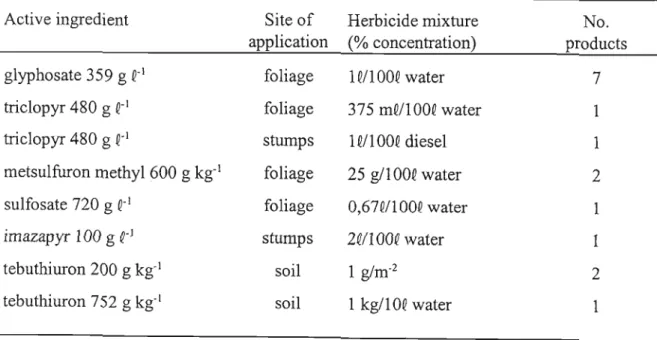
Ecology of coastal grasslands
The boundary between the savanna and the subtropical forest belt in the early part of the Holocene remains uncertain. The coastal plain, hinterland and highlands supported independent societies for most of the Iron Age (Hall 1981).
METHODS 1 Monitoring technique
- Monitoring strategy
- Statistical tests
- Description of sites
- Site 2
- Site 3
- Climate
Differences in condition with respect to chromolaena density are in keeping with the objectives of the study. Fuel loads at the start of the investigation were estimated at 2.5 and 5.0 t DM ha-1 at Site la and Site lb, respectively.
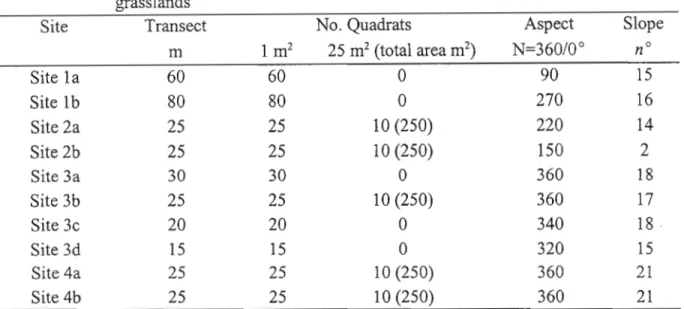
SERIAL PATTERNS OF CHANGE IN PERMANENT TRANSECTS 1 Statement of the problem
- Species-area cnrves
- Scale
- Methods
- Sampling intensity
- Scale
- Scale
- Discussion
Test the null hypothesis of no change in species area curves over time coinciding with annual fires. The smallest scale was equal to the area of the first quadrat (1 m2) and the largest scale was equal to the sum of all the quadrats in the transect (25 m2). Therefore, the null hypothesis of no change in species surface curves over time was falsified.
Sensitivity measures absolute change in species local frequencies between observations from 1 to 25 m2• The statistical analyzes of absolute change were strongly linear (Figure 4.6).
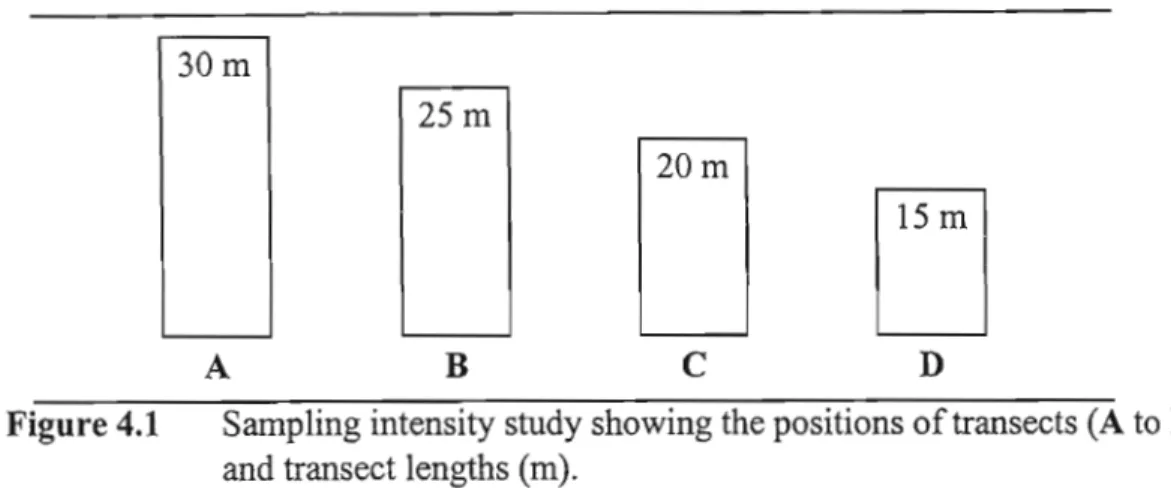
MONITORING SERIAL CHANGES IN WOODY SPECIES COMPOSITIONS, GRASS COVER AND YIELD
Woody plant succession
Multivariate data sets of samples, species, covariates and environmental variables were analyzed using CANOCO 4 (and Braak & Smilauer 1998) using an unconstrained and. Major trends in species data were determined by partial principal component analysis (PCA adjusted for covariates). To avoid a skewed distribution of species abundance, whereby a few high-scoring species unduly influence the ordination, data were log-transformed.
The effects of environmental gradients on species and sample assemblages were analyzed by partial redundancy analysis (RDA adjusted for covariates).
Soil fertility, particle size, organic carbon, nitrogen and sulphur tests
Rainfall is not included as the sites occurred on the same farm and seasonal rainfall data apply to all sites (Section 3.4). Variable topography and soil porosity, however, mean that sites on flatter, sandier areas receive higher effective rainfall than nearby sites on clay, drier aspects and steeper slopes. Soil sampling was only done at the end of the study and because the data could only be interpreted for a short period, the analysis is at the end of this chapter.
Results
- Fire effects on Chromolaena odorata, grass cover and yield .1 Initial infestation
- Soil fertility, texture, carbon and nitrogen contents at the end of the study
Larger specimens were widely spaced in the permanent plot at the end of the study. Sites on regal sand (Site 2) were positioned independently of the management gradient and tree succession throughout the study. The partial RDA of the minimal model (Figure 5.6) showed that covariates explained some of the inertia in the species data.
Soil samples were taken at the end of the study period from every fifth quadrat along the transect profile.
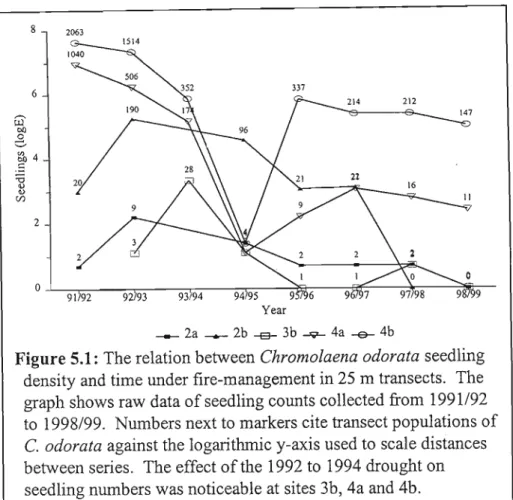
Discussion
Bugweed and lantana were the most important alien species responsible for secondary invasions in coastal grasslands. These findings are consistent with von Maltitz et al. 1996) who showed that ThemedalAristida coastal sandy grasslands are seral with the forest. Routine coastal grassland fires on the Glenrosa lands killed forest precursor species but did not kill savanna species.
In Huston and Smith's (1987) simulations, removing the previous dominant caused a dramatic increase in the following dominant.
MONITORING SERIAL CHANGES IN HERBACEOUS SPECIES COMPOSITIONS
Statement of the problems
Methods
- Classification of herbaceous communities
- Spatial and temporal trends in herbaceous community dynamics .1 Trends in species richness and diversity
- Spatial and temporal trends in herbaceous community dynamics .1 Trends in species richness and diversity
- Herb and grass production at the benchmark site
In Section 4.3.2, the data included both woody and herbaceous species, where richness is a function of asymptote position. The benchmark site (sites 1a and 1b) occurred in the center of the site scatter plot. The first and second axes of the species-environment inter-set were correlated (shaded area).
This compares with weighted averages of cromolene (103), shrubs (70) and beetles (20). The remaining VIFs were within acceptable limits" 20).
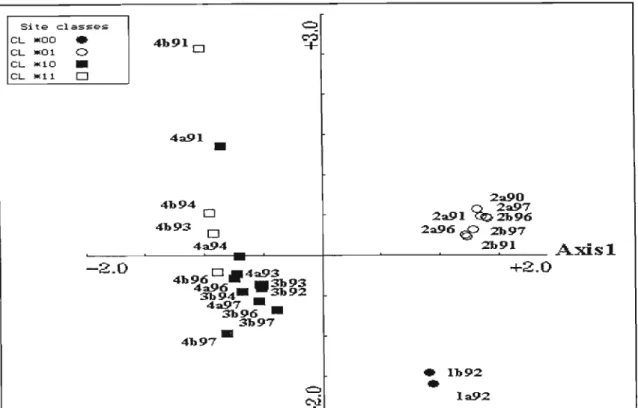
Discussion
The results differed from Rutherford and Westfall's (1994) analysis of the dominance of life forms in the savanna biome. Aristidajunciformis declined sharply from 100% frequency to 24% in the sandy soils of the la site under conditions of long dormancy (six to seven years) and annual burning. Themeda triandra, however, benefited from ungrazed conditions with annual blight.
Aristidajunciformis was a species that could not dominate under conditions of increasing species richness and biomass (diffuse interspecific competition), and local abundance decreased under conditions favoring successional replacement.
CONCLUSIONS AND RECOMMENDATIONS 1 Synthesis
Minimal integration with other control methods in the first year of follow-up affected rehabilitation. On trust lands, the vegetation structure was altered due to the absence of fire, but the reintroduction of burning, with follow-up control, failed to restore the original state. Species turnover between the first two and last two years in sparse (site 2a), moderate (site 3b) and dense (site 2b, 4a and 4b).
Three of the remaining four sites were monospecific and since chromolaena was present in all quadrats during the first two years, there was no turnover.
Turnover intervals
Species diversity in coastal grasslands
Beta diversity in fragmented habitats contradicted the notion that post-fragmentation species losses are permanent (Saunderset at. The absence of non-native vegetation facilitated restoration processes, favoring structural and functional diversity in degraded coastal grasslands. The species was recorded in KZN Drakensberg in montane grassland between 1600-2000 m (Scott-Shaw 1999) and as fragmented populations from the coast to 2100 m (Pooley 1998).
It is a hardy species with a woody rootstock found in coastal grasslands in the Eastern Cape and KZN.
Threats to coastal grasslands
Coastal landowners have the choice of managing grasslands in several states ranging from open grassland, savannah to forest. The succession is based on the theory that coastal grasslands are anthropogenically derived (Hall 1981) and are seral to forest. Observed states differ from regal sands in that native woody plants appear very early in the succession from grassland to forest and are typically fire resistant.
Once grasslands are replaced by chromolaena thickets or savanna trees, fire is unable to return states to open grassland.
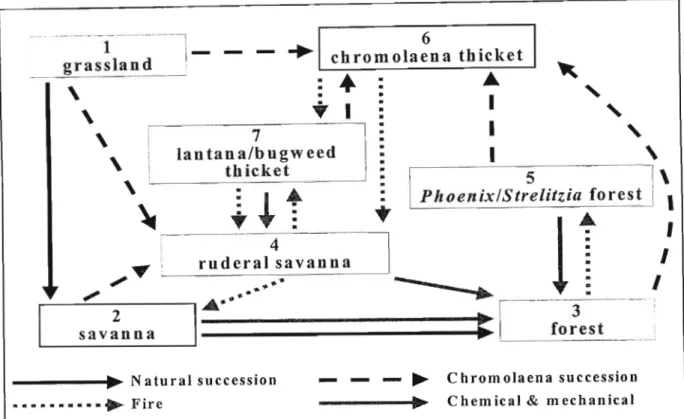
Critical review of the monitoring approach .1 Strengths
- Weaknesses
- Monitoring recommendations
Presence data used in the calculation of abundance give equal importance to species in uniform quadrat sizes. Presence data can detect changes in composition as species enter or leave quadrats, but too much change in numbers within quadrats. Yield was only measured at the end of the season because sites were not grazed, so compensatory production was considered small.
Monitoring 'biodiversity' becomes an ecologically meaningless exercise in monotonously cataloging species if the results do not convey diversity as a functional component of vegetation.
Epilogue
International Network for the Biological Control and Management of Chromolaena odorata, Synthesis Report of the Third International Workshop on the Biological Control and Management of Chromolaena odorata. A review of the status and integrated control of the invasive alien weed, Chromolaena odorata, in South Africa. The influence of tree biology and fire in the spatial structure of a West African savanna.
Autecology of the invasive alien plant, Chromolaena odorata, in the Greater St Lucia Wetland Park.
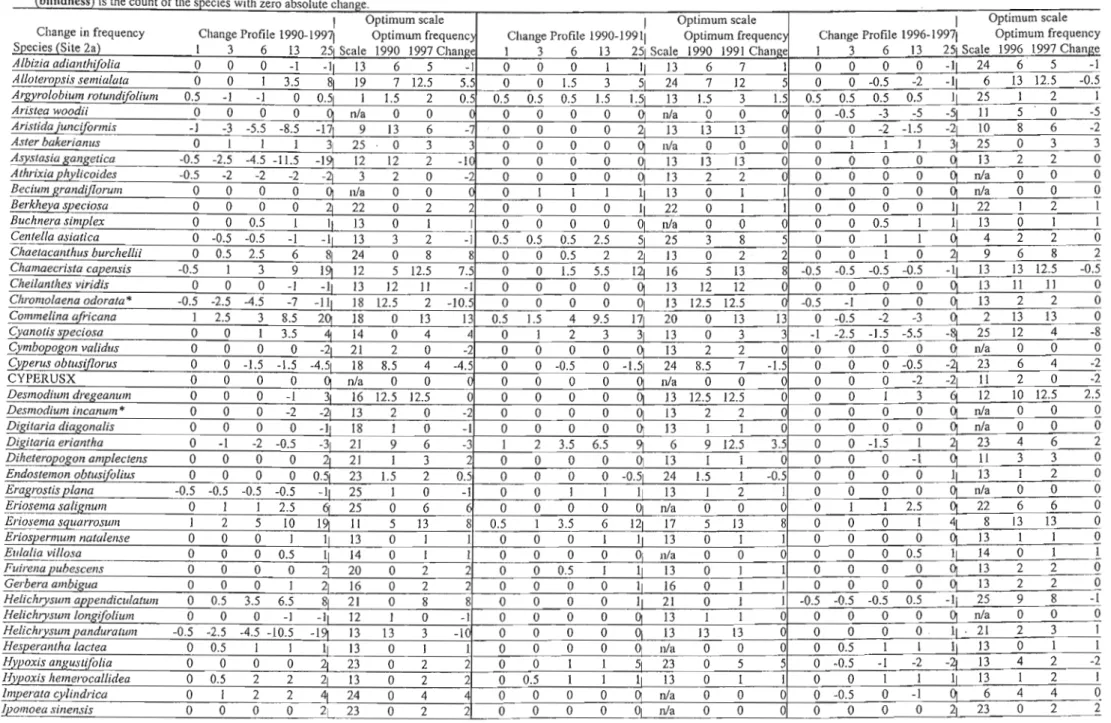
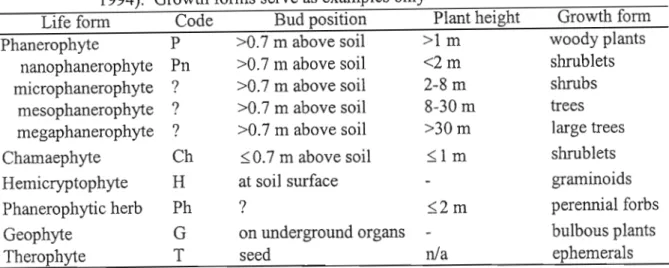
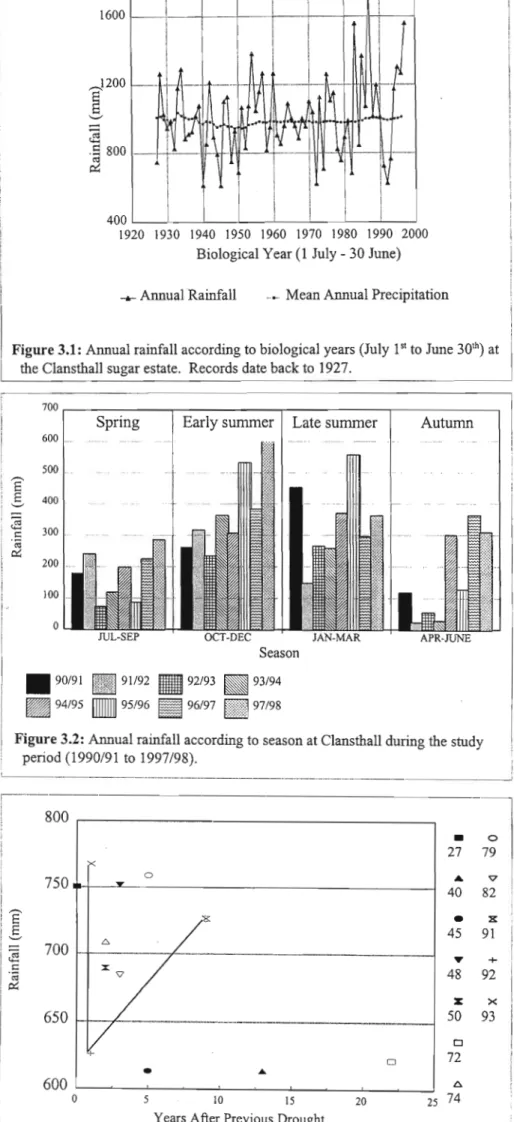
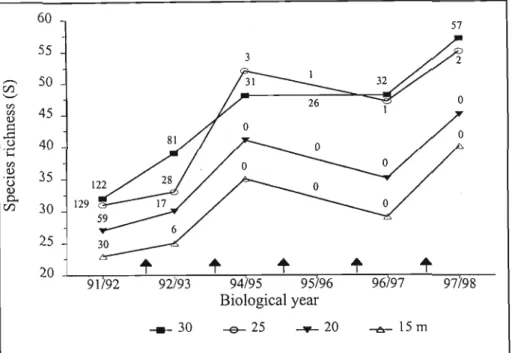
![Table 4.2 Percentage of asymptotes] contained within fixed-belt-transects (25 m 2 ) at five coastal grassland sites](https://thumb-ap.123doks.com/thumbv2/pubpdfnet/10629353.0/68.844.91.758.797.1060/table-percentage-asymptotes-contained-fixed-transects-coastal-grassland.webp)
